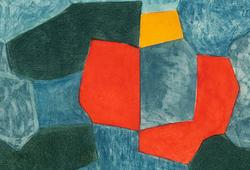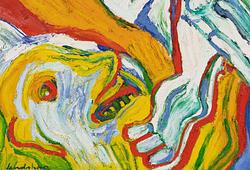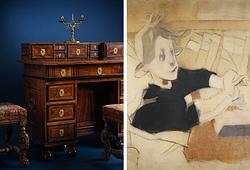Arman (Armand Pierre Fernandez)
"Pieces of Liberty"
Signed Arman, numbered AP 1/2. Edition 3 + 2 AP. Executed 1985. Height 67 cm. Green patinated bronze, height 67 cm. This work is recorded in the Arman Studio Archives New York under number: APA# 8306.85.007
Alkuperä - Provenienssi
AH Grafik, Stockholm, Sweden.
Muut tiedot
Fernandez Arman's interpretations and adaptations of the legendary Statue of Liberty is a recurring theme in Arman's long artistry.
Throughout his career, Arman has worked with varying techniques for "accumulations" and "deconstructions”.
Works of art that he either crushed, sliced or burned. These objects tended to be musical instruments, sculptural reproductions and even furniture. He began creating his "deconstructions" in 1959 with his Violins, fragile wooden instruments that he dissected in various ways. The motive behind his artistic actions is to interrupt the deconstruction and control the final stages of an object's life.
His object-oriented approach looks back at Marcel Duchamp's art. Yet, Arman differentiates himself by saying “as I evolved into object art, I found myself being called a Pop-Artist, but the term isn’t exactly right. Pop-Artists changes and processes the object. I used the real object. Marcel Duchamp, who is the obvious ancestor of object art, might have taken a soup can and put it on a pedestal. Andy Warhol would repaint the soup can. Jasper Johns would cast it in bronze. I’d take the soup can and cut it into pieces or weld hundreds of them together in order to change the state of the object from what it was when you first saw it in the supermarket. My interest is in exploring the various worlds of the object."
Arman's unique view and contemplation of the Statue of Liberty as an object, attracts the eye to explore its many layers and the different perspectives that emerge in the interpretation. Each part of the original statue is divided and displaced, but retains its original shape despite ongoing deconstruction. On her head sits her famous gold crown. The torch in her right hand is also colored a brilliant golden luster. Through the sculpture's richness of detail, viewers can still distinguish the intricate folds of her clothes and the details of her costume. Her revelation is subtly discernible, which encourages further contemplation and thought.



















































